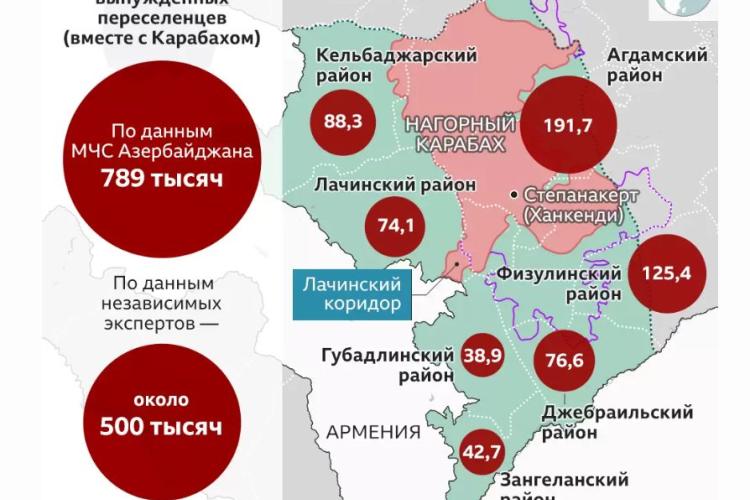An Azerbaijani returns to Aghdam, thirty years after being expelled from there.
Last month, the first group of internally displaced Azerbaijanis - people forcibly displaced from the occupied territories of Azerbaijan in the early 1990s - headed back to their native land in the Zangilan region of Azerbaijan. Azerbaijani emigrants set out for their long-lost homeland to reclaim it, with the hope that other IDPs will follow the example of these first returning pioneers.
Their return comes almost 30 years after the entire region fell under the military occupation of Armenia. During these years, the occupied settlements were essentially turned into abandoned ruins, without any infrastructure to make them habitable. In addition, they were also heavily mined. Now, after the liberation of these territories, Azerbaijan has a strong desire to show its people that the era of a full return to the de-occupied areas is approaching.
As another proof of responsibility for its obligations, Azerbaijan completed the construction of a modern highway that provides direct access to the territory of Armenia for local Armenians. And something, perhaps even more important, is that during the construction of the new road, direct contacts were made between the Azerbaijani authorities and the local Armenian population. This fact indicates that dialogue and mutual understanding between the Azerbaijani government, Azerbaijanis and the local Armenian community is possible and even a priority.
It should be noted that the Armenian residents of Azerbaijan's Lachin province are illegal aliens – many of them ethnic Armenians from Syria who settled there after 2016 under a project supported by the government of Armenia. Azerbaijan has repeatedly stated that it considers the construction and settlement of its occupied territories a war crime and a violation of the Geneva Conventions, which entails international legal responsibility.
Video footage circulating on social media shows fleeing Armenians burning their houses in the town of Lachin and surrounding villages, despite multiple warnings not to burn their homes or harm the environment. Many people in Azerbaijan remain confident that burnt houses and environmental terror will not be the only consequence of the retreating Armenians, and to top it off, they will leave a large number of new mines there.
Of course, it will take a long time to heal the scars of the previous conflict, and recovery will certainly be difficult, but in order to establish lasting peace, security and prosperity in the region, as soon as possible, there is no time to lose.
Source: Embassy of Azerbaijan in the Republic of Bulgaria
Map legend of internally displaced persons from Nagorno-Karabakh and neighboring regions of the Republic of Azerbaijan.
In brown circles - number of internally displaced persons (refugees) from the individual regions occupied by the Armenian forces in the period from 1988 to 2020.
Dotted line - border of the territory under the control of the Armenian forces in the period from 1988 to 2020.
In green - territories recaptured by Azerbaijan during the 44-day Second Karabakh War in 2020.
In red - area of responsibility of the Russian peacekeeping contingent.
Purple solid line – border of the Nagorno-Karabakh Autonomous Oblast, which existed during the time of the USSR.
Map: BBC

